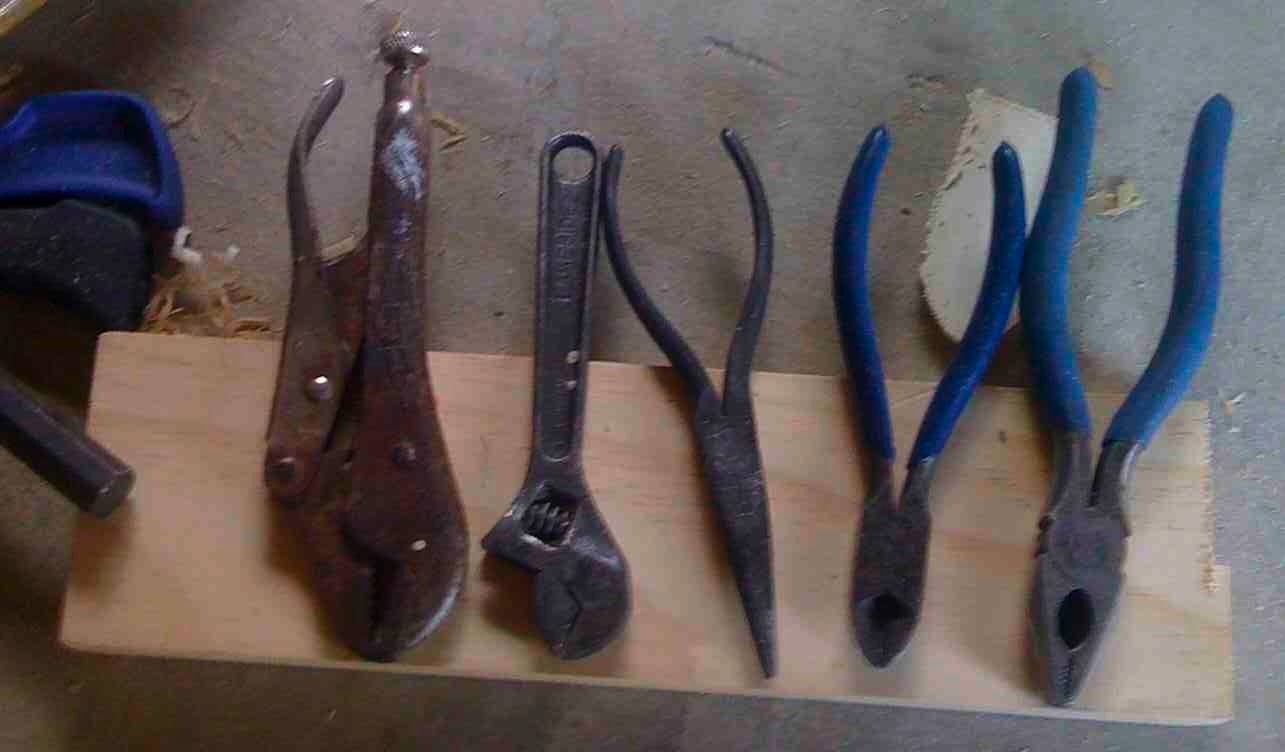So one of the projects that has gotten starved for time lately is working on my grandfathers tool box. My father was, among other things, a carpenter. He worked pretty much right up until he went into the hospital and unfortunately the tools he had at his last job site were “lost”. So when my father recently gave me all of my grandfathers tools that he had it was an interesting collection. The centerpiece of which was two of my grandfathers old toolboxes – including his large carpenters tool box.
Largely empty of tools – the toolbox still had the original wooden dividers my grandfather had made and was filled with an odd assortment of tools (e.g. braces, bits, a crow bar). Now that my dad is retired he also gave me some of his tools and I decided to make new dividers combined with the tools I had gotten from my father re-stock the toolbox.
After taking the dividers in and out of the tool box a dozen times to confirm fit after each modification I decided to make a scale cardboard version of the sides of the toolbox so I could work on the toolbox like one of the sides was removed. Below you can see the tools lid out for test fitting.
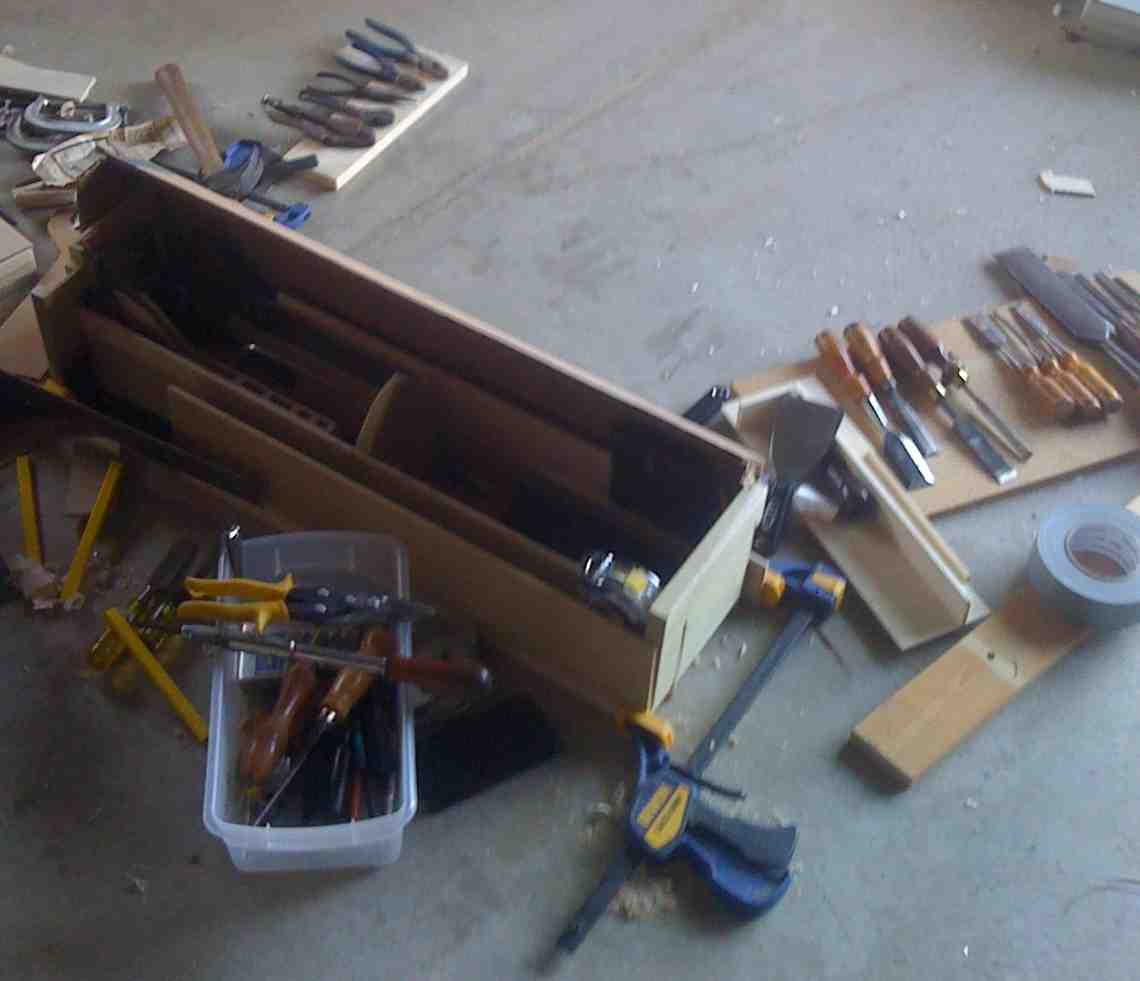
In case you are wondering why it is so much work to just stuff a tool box – maybe it would help to understand the requirements. The toolbox is 32 inches by 9 inches and eleven inches tall at its peak. The top is angled so it is not quite as large as that would make it sound. My goal is to be able to pick the toolbox up and comfortably carry it with one hand. So I am putting an absolute limit of 50lbs on its weight when full of tools. I would also like to be able to get at commonly used items without having to move another tool, or at worst having only to move one other tool.
Here is what I have in the toolbox so far…
- 2 pannel saws – one cross cut and one rip
- Backsaw – dovetail saw filed crosscut
- A hacksaw
- A coping saw
- A pad saw
- Crowbar
- Cats paw (small pyrbar)
- Tiny cats paw
- Try square
- Speed square
- Adjustable square
- Framing square (leg of which sticks up out of box)
- Large razor blade knife (with extra blades)
- Several small razorblade pen knives (with extra blades)
- Marking knife (for dovetails)
- Carpenters pencils
- Folding carpenters ruler
- Tape measure
- 12 inch steel – cork backed ruler
- Zippo lighter
- Pencils
- Notepad
- Calculator
- Plum-bob
- Needle files
- Level
- Wallet for extra plane blades and extra blades for the different planes
- 2 1” chisels and 1 1/4 inch “beater” chisel
- Angled marking gauge
- Combination spoke-shave (round and flat)
- Sharpening honing stone
- Small bottle of honing oil
- Hand scrapers in leather envelope
- Small bull nose plane
That sounds like a lot but the crowbar and cats paws go in the small saw till at the back of the box, and the right front half of the box forms an open tool well that got filled with specialty holders. So things can get packed fairly tight and yet be easy to get out without tools banging together.
I still need to finish holders but I know where the following tools will go in the box
- Diamond needle files
- Collection of dentil picks
- Assortment of small sandpaper squares
- Telescoping mirror
- Telescoping magnet
- String level
- Plastic impact mallet (for chisels, and “persuading” things)
- Hammer
- Low angle Jack plane
- Skew block plane
- Small Rabbet plane
- Screwdriver for plane adjustment
- Tiny brass hammer for blade adjustment
- A Stanley 60 1/2 adjustable mouth block plane
- Needle nose pliers
- Lineman’s “dikes”
- Small wire cutters
- Locking pliers
- Chalk snap-line
Even with all that there is still some room to work with. My problem is that I still need to pack in the rest of these tools / items.
- Torpedo level
- Small hand mirror
- Several neodymium magnets
- Several 1 and 3 inch C clamps
- String for line level and plumb bob.
- Several bevel edge socket chisels for dovetails
- Extra blades for coping saw and hack saw
- Glass cutter
- Push drill and bits
- Set of good screwdrivers
- Earplugs
- Eye protection
- Rag
- Leather work gloves
- Small thing of super glue
- Needles and thread
- Simple first aid – band aids, antiseptic cream, ibuprofen packet
My main problem, I think, will be figuring out how to get the screwdrivers in the right side tool well – and easily accessible – without making it hard to access they other tools.
Below you can see me laying out my planes. They will sit in a small wooden pull out drawer. The pulls out portions are going to be made from cherry – while inside the box I am using mostly poplar and a decent grade of plywood.
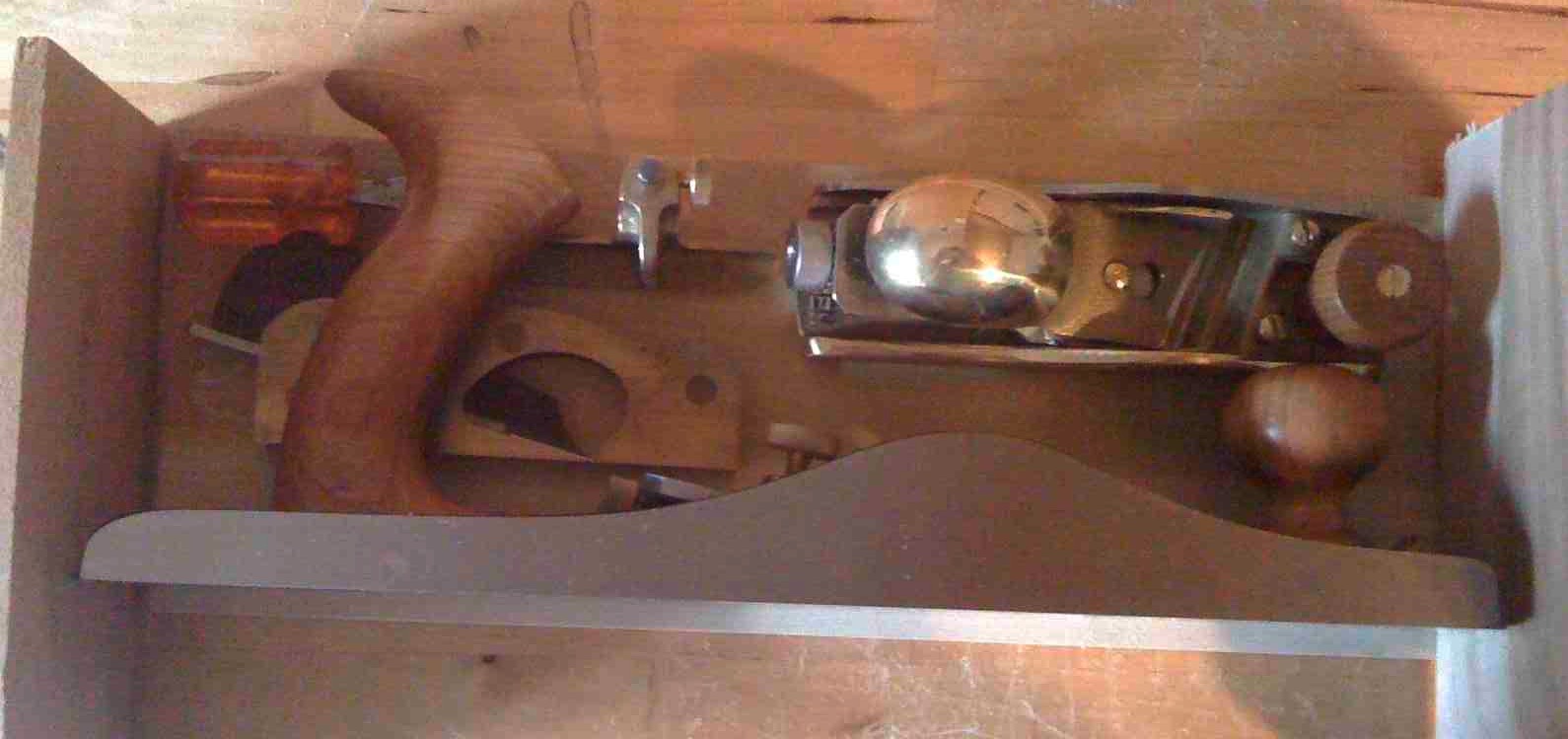
The planes above are a Lie-Nielsen sckew block plane, low angled jack plane, and rabbet plane. The jack is amazing in that it can be set for rough or finishing work. I have a spare blade for it and also got a 90 degree scraper blade to be able to use it for finishing. The skew block plane is useful for both a block plane or for use in dadoes. I have a set of side rabbet planes and a place reserved for them – but I am still on the fence about adding them.
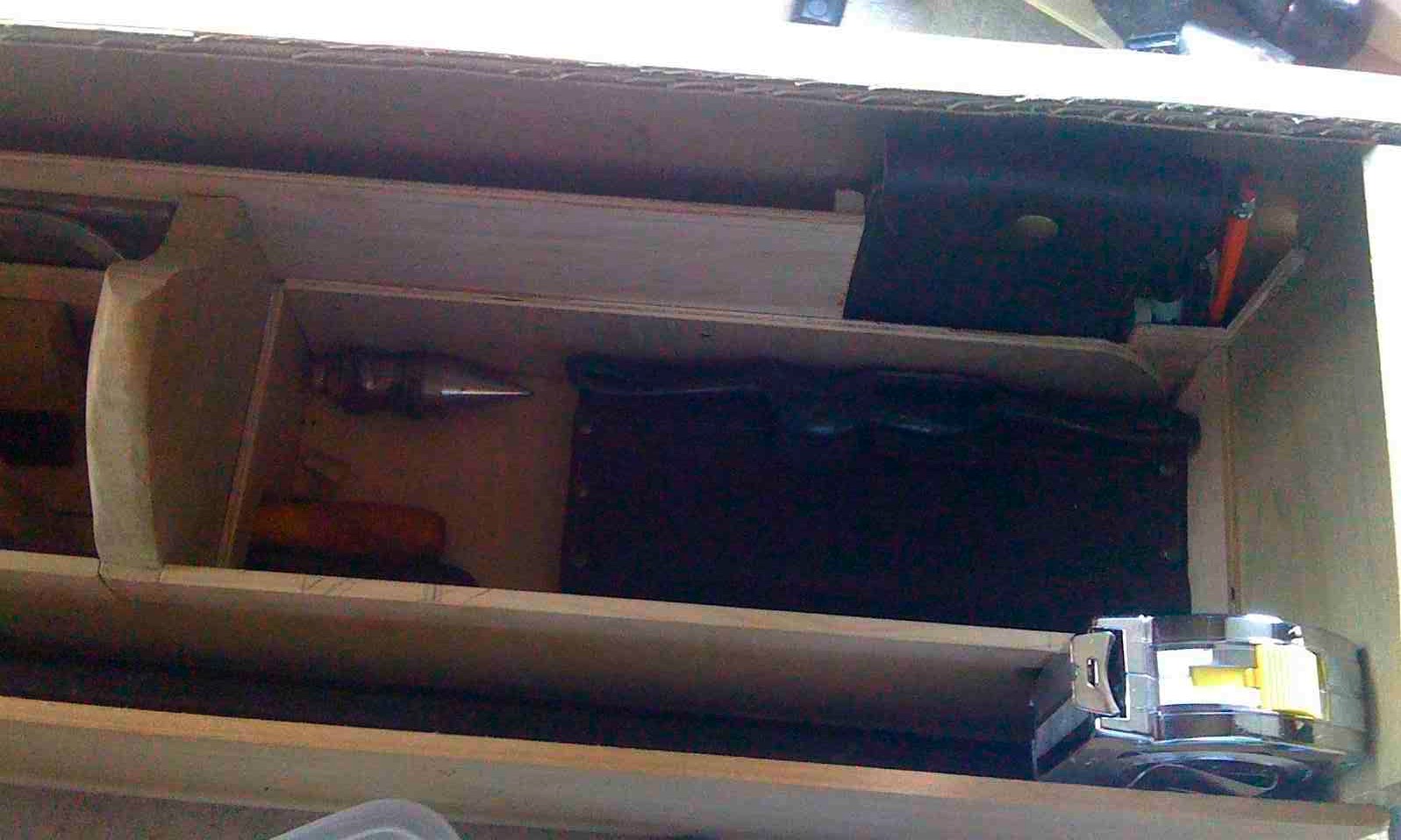
Here you can see the left side of the box. There is a small well area on the bottom of the box. That is where the oil-stone and plumb bob will live. This is where I am thinking the chalk snap line will go. Along the side of the space is a pocket for the scrapers and a bin for pencils and pens. The reason there is about a quarter inch of dead space along the side of the toolbox is that is where one leg of the large framing square sits when in the box. It is a bit of a hack but I plan on sewing an envelope to hold an assortment of pieces of sand paper. That envelope will sit on top of the carpenters square in this dead space.
The drawer with the plane box sits atop the left side storage well. I should also be able to have another box atop that and then room for a smaller pull out tool drawer at the top of the box. The layout was bugging me so I went and made a cardboard mockup of that top drawer. That way I can build it and the plane drawer and then make the center box to fit. Not quite optimal but I am fairly sure I will be able to fit the chisels I want – as well as the sewing kid and some other tools in those center boxes.
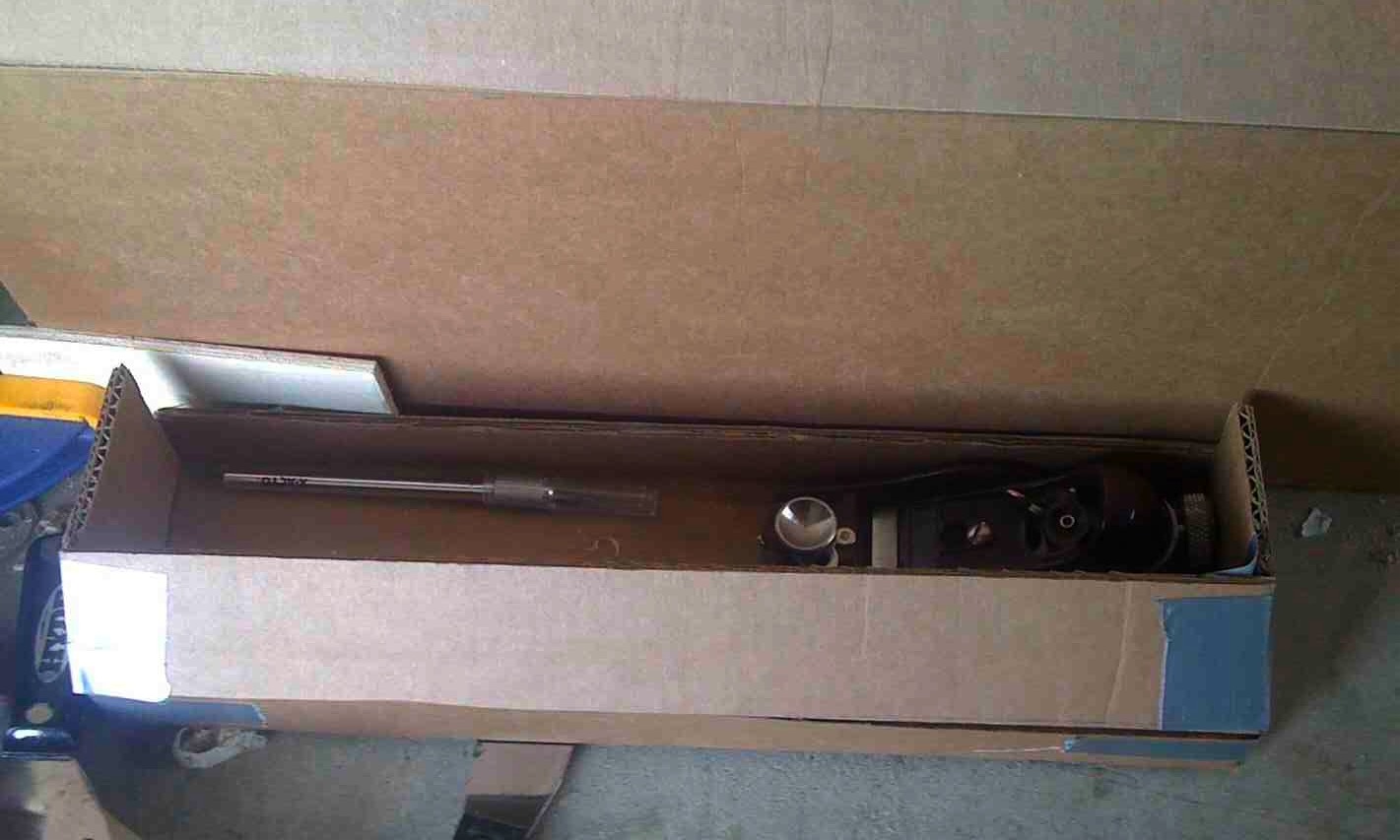
Here is what the right side tool well looks like – if the back of the toolbox were removed. This has proved the most useful attribute of the cardboard mockups of the box’s sides – being able to visualize the insides as if I had x-ray vision. It is kind of like making simple test cases when developing software.
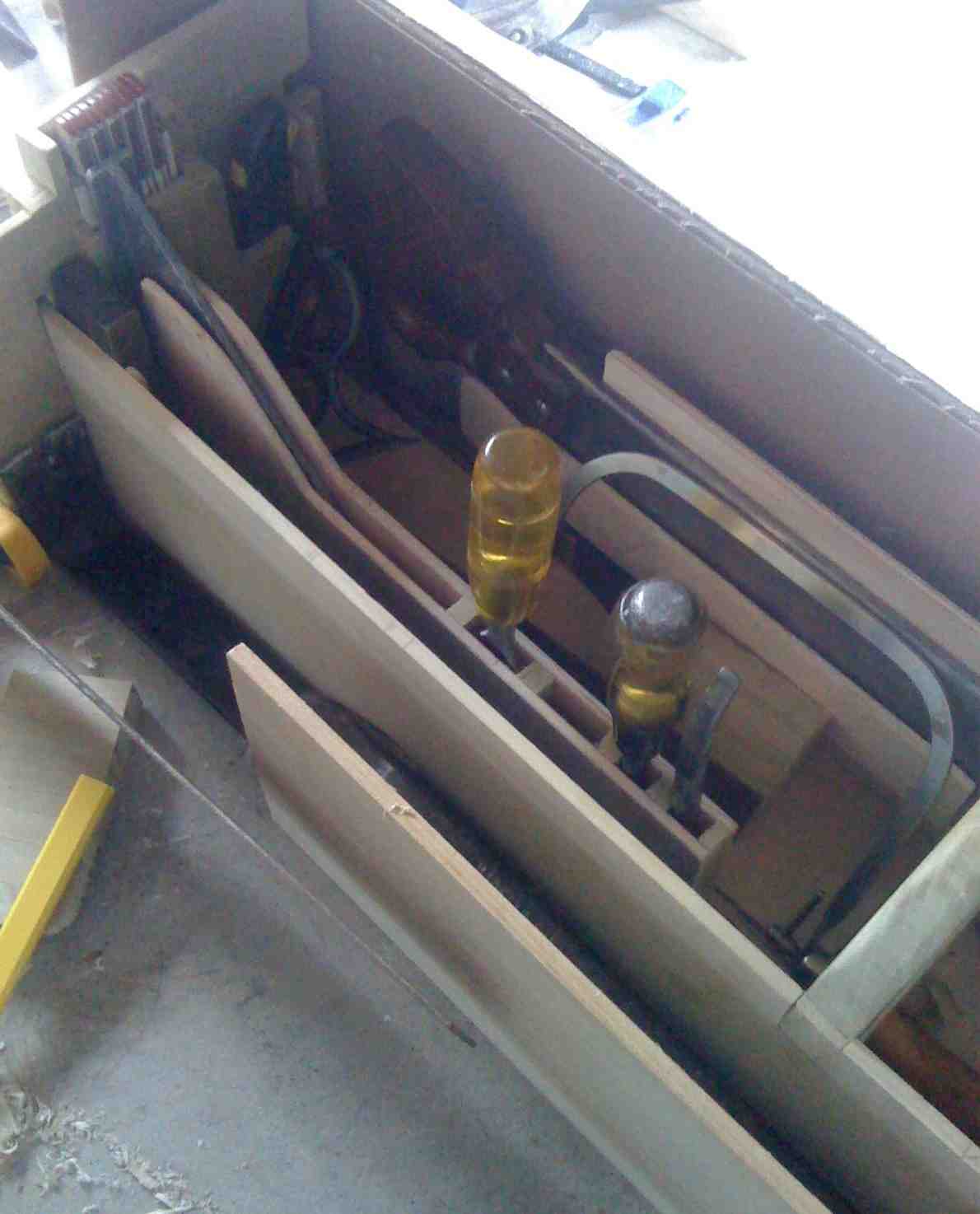
So I am currently laying out a small set of holders to go next to the chisels, but on the other side of the coping saw. Should look something like the picture below. I am still trying to figure out if I want to have dividers between the tools. On the one hand it would keep the tools from rattling around but it would mean I would have to have *those* tools and could not swap tools in and out as needed. Still on the fence about how to do this.
